Welcome to our celebratory 200th edition supplement. In November 2004, Rail Engineer was born out of RailStaff, which itself is now 26 years and 283 issues old, and launched at Railtex. It was launched to satisfy a demand from railway engineers who wanted to know more about what was going on around the network.
Since the first issue we have published 2,900 major articles and printed over two million copies (775,000 at the 100th edition). The magazine has had four editors and 25 regular writers, all of whom are engineers and experts in their field. This general overview considers some of these reports as do two special features illustrating rolling stock and digital railway developments since 2004.
Our reports have included collapsed and rebuilt earthworks, new plant and equipment, demolished and reconstructed bridges, re-opened lines, reconstructed stations, new trains, and the latest technology in signalling and telecommunications, surveying, and security. The team has also visited numerous project sites, attended various technical events, and seen train production lines in the UK and abroad.
We have also produced features that explain the basic principles of railway engineering aspects in language that can be understood by engineers from other disciplines. This includes articles such as Chris Parker’s April 2019 report on Risk-based CWR management and David Bickell’s March 2019 feature on the evolution of signalling. Clive Kessell’s October 2008 GSM-R feature provides a clear, comprehensive description of this essential system which is still relevant today.
Many of these features contain excellent photography as illustrated by features on repairing viaducts on Scotland’s remote Rannoch Moor in November 2008 and refurbishing Connaught tunnel for Crossrail in May 2012.
We have shown the impressive work done to resolve complex technical and project challenges and are glad to report such achievements which sometimes contrast with uninformed press comments. When we report things that have gone wrong, we try to put this in context. For example, the cost and time overruns of electrification schemes were, in large part, due to the lack of a long-term UK railway strategy which resulted in boom and bust procurement of both rolling stock and electrification.
The cancellation of HS2’s eastern leg, which had been years in planning, on the spurious basis that the East Coast Main Line could be upgraded to provide the same capacity, is another such example as explained in our March 2022 feature about the Integrated Rail Plan.
Electrification
Rail Engineer has always campaigned for railway electrification as this provides a better railway however that might be defined. In September 2006, we considered how British Railways had kept skilled electrification teams together through infill electrification projects and how opportunities for such projects were being missed.
Following the announcement of the North Western and Great Western electrification projects in 2011, two features in our December 2012 issue described how the Liverpool-to-Manchester and Great Western electrification schemes were being delivered. That year, Network Rail held a conference with its suppliers to seek their early engagement in the many forthcoming electrification schemes. At the time it was considered that there would be 11 simultaneous major electrification projects by 2014.
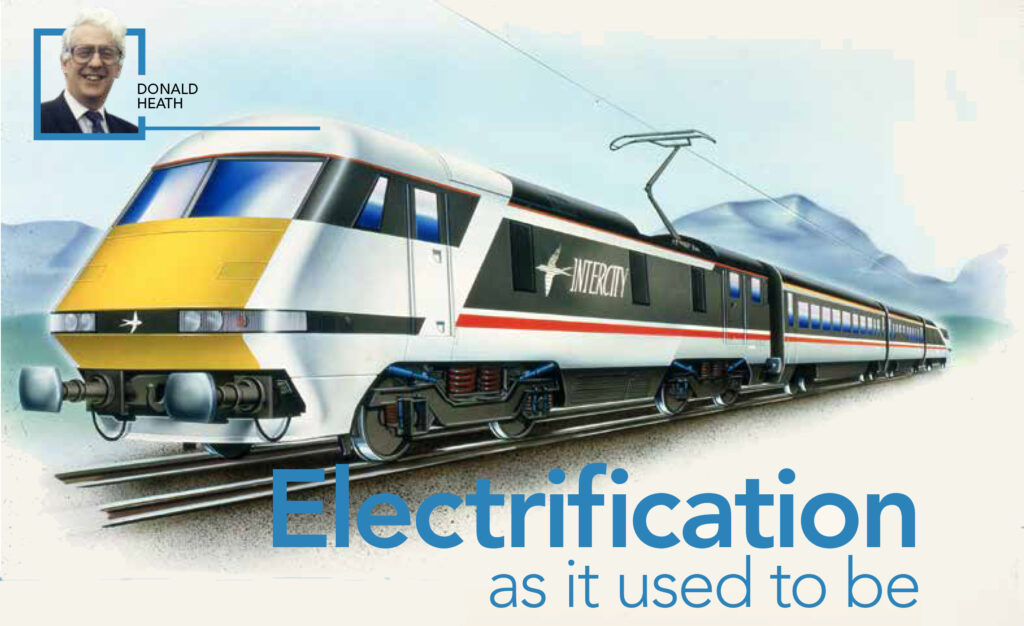
However, ramping up industry capability to deliver such a huge programme after delivering almost no electrification for many years proved to be an unrealistic aspiration. And so, in 2017, significant cost and time overruns led to curtailment of the Great Western and other electrification schemes.
To demonstrate electrification delivery at an affordable cost, in December 2017 Don Heath, ECML electrification project director, described ‘Electrification as it used to be’. In the March 2019 feature ‘Relearning electrification’, we summarised the Railway Industry Association’s (RIA) electrification cost challenge report. This noted that electrification was being delivered at an affordable price in Scotland and concluded that: “by having a rolling programme of electrification, Scotland is benefiting from learning and experience being passed from one project to the next.”
Our May 2021 feature ‘Decarbonising Scotland’s railway’ described the work being done in Scotland to have a net-zero carbon railway by 2035. This stressed the benefits of electrification including replacing ageing diesel trains with cheaper higher performing electrics. It also showed how this is a fully integrated approach to the whole railway system by providing the required infrastructure and rolling stock to meet enhanced timetable requirements.
Major projects
Rail Engineer was launched in the same year that tunnel boring machine ‘Annie’ completed tunnelling on HS1 from Stratford to St Pancras. The decision that St Pancras would be the eventual Eurostar terminal was taken in 1994, the same year that Eurostar services started from Waterloo. These initially ran to the Channel Tunnel on the Southern third rail network. In 1996, work started on HS1, the first section of which opened in 2003.
In September 2005, Rail Engineer’s then editor, Colin Wheeler, reported that HS1’s tracks were complete to within a mile of St Pancras. When the rebuilt station opened with suitable ceremony, Colin was there and clearly enjoyed a great night as his December 2007 report ‘A Royal night of ‘Son et Lumiere’ at St Pancras International’ showed.
Looking at our early issues was a reminder of the long gestation period for major rail projects. The March 2005 issue reported on the Crossrail Bill being put before Parliament. It received royal assent in July 2008. Between July 2011 and July 2022, we published 24 features on the £18 billion Crossrail project. The first, in June 2011, was about the arrival of the tunnel boring machines, the last, in September 2022, was ‘Elizabeth line worked first time’.
Thameslink was another long-running project which was originally being entitled Thameslink 2000. Its route was created in 1988 when services were restored through Snow Hill Tunnel that had not carried passengers since 1916. The resultant through north-south services across London then became seriously overcrowded. British Rail was developing proposals to alleviate this which were then delayed by privatisation, lack of funding, and two public enquiries.
In December 2007, Colin Carr reported that government had announced £5.5 billion funding for the Thameslink programme to increase train frequency to 24 trains per hour. His report outlined plans to rebuild Farringdon, Blackfriars, and London Bridge Stations, and provide a new viaduct at Borough Market. Our later Thameslink features also covered the Bermondsey dive under and the route’s telecommunications, signalling, and use of automatic train operation.
Another major project was the Reading station area redevelopment from 2008 to 2014 which provided an additional five platforms, a new train depot, and extra capacity from an extensive track reconfiguration which included the provision of a 2km viaduct. This was the subject of various features including one on its approaching completion in April 2014.
Other enhancements
The new Ordsall Chord featured in our January 2018 issue. As Mungo Stacy described in his July 2011 article ‘Manchester United’, this was built to improve capacity at Manchester Piccadilly. However, the Chord was only one part of this plan. The other part was relieving congestion through the Castlefield corridor by building extra platforms at Piccadilly. As these platforms were never built, the Ordsall Chord never delivered its potential and now only carries one train per hour.
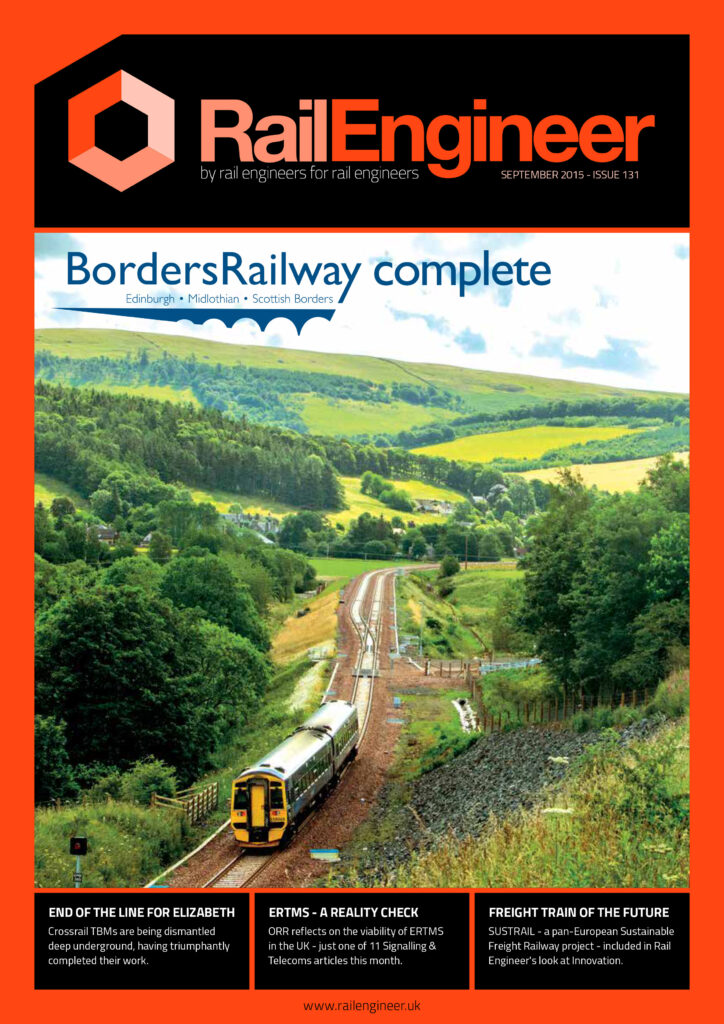
The Castlefield corridor is one of the few areas that Network Rail has declared to be ‘congested infrastructure’. In contrast to Thameslink, there are no plans for infrastructure enhancements and its trains have been reduced from 15 to 12 per hour. The extra Piccadilly platforms were one of a number of cancelled projects after Network Rail was reclassified as a Central Government Body in 2014. As a result, it could no longer fund projects from capital markets and has to borrow from the UK Government, subject to Treasury limits.
The many capacity improvements on which we have reported include various East Coast Main Line (ECML) improvements including the Allington Chord (May 2005), Hitchin flyover (August 2013), Graeme Bickerdyke’s North Doncaster Chord feature (January 2014) and Bob Wright’s description of the 155-metre tunnel being pushed under the ECML at Werrington. Our most recent ECML feature was Colin Carr’s article ‘Clearing the throat and removing the hump’ about the remodelling of the Kings Cross throat, featured in our January 2021 issue.
On the West Coast Main Line, Colin Wheeler covered the Rugby station remodelling in October 2006, there were also various features on the Trent Valley four-tracking project which was completed in 2008 and the Norton Bridge flyover was covered in our June 2014 issue.
Projects to redouble lines included 30km on the Cotswold line as reported in June 2011 and, in August 2019, the redoubling of 26km between Aberdeen and Inverurie as part of the Aberdeen to Inverness improvement project.
We were also glad to report on the re-opening of the following lines: Larkhall to Milngavie (2005); Stirling to Alloa (2008); Airdrie to Bathgate (2010); Borders (2015); Okehampton (2021); as well as the opening of a new line to Barking Riverside (2022). Our reports on current re-opening projects include Mark Phillips’s July 2020 report on the Northumberland line as well as features on East West Rail and Levenmouth.
Freight traffic enhancements included two features in February 2010 and March 2012 on gauge clearance for high cube containers for the strategic freight network. The Felixstowe branch serves the UK’s largest container port and carries the country’s highest freight tonnage. In July 2019, David Bickell described its new 1.4km loop which increased freight paths on the branch from 33 to 47.
Remedial work
Rail Engineer has featured various infrastructure damage repairs. Not all of this was due to severe weather. After the partial collapse of a tunnel being built above the railway at Gerrards Cross for a supermarket, due to uneven backfilling around the tunnel segments, we reported how the line had been re-opened in our September 2005 edition. After its 2008 fire, Chris Parker went into the Channel Tunnel for his January 2009 report on its repair. The flood that blocked the line south of East Croydon was due to the failure of a 12-inch water main. Grahame Taylor’s October 2011 report explains how this incident was managed.
We also reported on storm flooding in Somerset in February 2013, and the use of coffer dams to hold back floods to minimise further damage. In a March 2014 feature, Chris Parker considered what needs to be done to re-open the railway after it had been flooded. This included the need to consider bridge piers at risk from swollen rivers and described how an apparently sound bridge on the central Wales line had collapsed in 1987 with fatal results.
Serious unseen damage to the piers of Lamington viaduct closed the West Coast Main Line for two months was the result of the River Clyde being two metres above its normal level. Our March 2016 feature explained how this damage was repaired.
The steep rock cutting at Carmont needed to be stabilised after rock falls onto the track. Our report on this work, and the new cutting crest drain was in the March 2011 issue. The importance of constructing drains exactly as specified was, sadly, demonstrated nine years later when this drain caused the fatal Carmont derailment.
A dramatic slip of the 34-metre deep Harbury cutting closed the Oxford to Birmingham mainline for six weeks. Colin Carr’s May 2015 report explained that this was caused by an unknown vertical fault line of limestone backed by mudstone and how its repair involved the removal of 560,000 tonnes of material.
A slow-moving slippage of the ledge on which the Settle and Carlisle railway runs above the River Eden closed the railway for over a year. In his September 2016 feature, Stuart Marsh described how the repair required the removal of over 500,000 tonnes of material and the construction of a 75-metre long reinforced concrete track bed slab secured by 230 piles typically 18-metres long.
The 80 metres of the Dawlish sea wall washed away by storms in February 2014, which closed the railway for two months, was a particularly high profile event. Colin Carr’s reports in March and July explained how this breach was repaired and the immediate action that saved the houses behind the wall.
Mark Phillips quoted lines from Shakespeare’s King Lear in his October 2016 feature to explain why the cliff just west of Dover is named after the bard. His did so as the railway under this cliff had also suffered storm damage which took nine months to repair. As the great playwright asserted “All’s Well That Ends Well.”
Stations
Since our first edition in November 2004, there have been 82 new mainline railway stations of which 16 were on new lines. Some of the new stations on which we reported were Shepherds Bush (2008); Laurencekirk (2009); Southend Airport (2011); Oxford Parkway (2015); Edinburgh Gateway (2016); Cambridge North (2017); Robroyston (2019) and Reston (2022).
The station enhancements on which we have reported include a mix of track remodelling and station rebuilding. In September 2007 we covered the transformation of St Pancras station for it to serve international, UK mainline, domestic-high speed, and Thameslink services.
Haymarket did not require any track alterations, it just needed to be rebuilt to cope with a 138% footfall increase in 15 years which was certain to increase further when the adjacent tram stop opened. As our July 2013 feature explains, the rebuilt station provided 10 times its previous concourse area. Nottingham was also getting overcrowded and needed to be integrated into an adjacent tram stop. Our August 2013 edition described these works and the associated track remodelling.
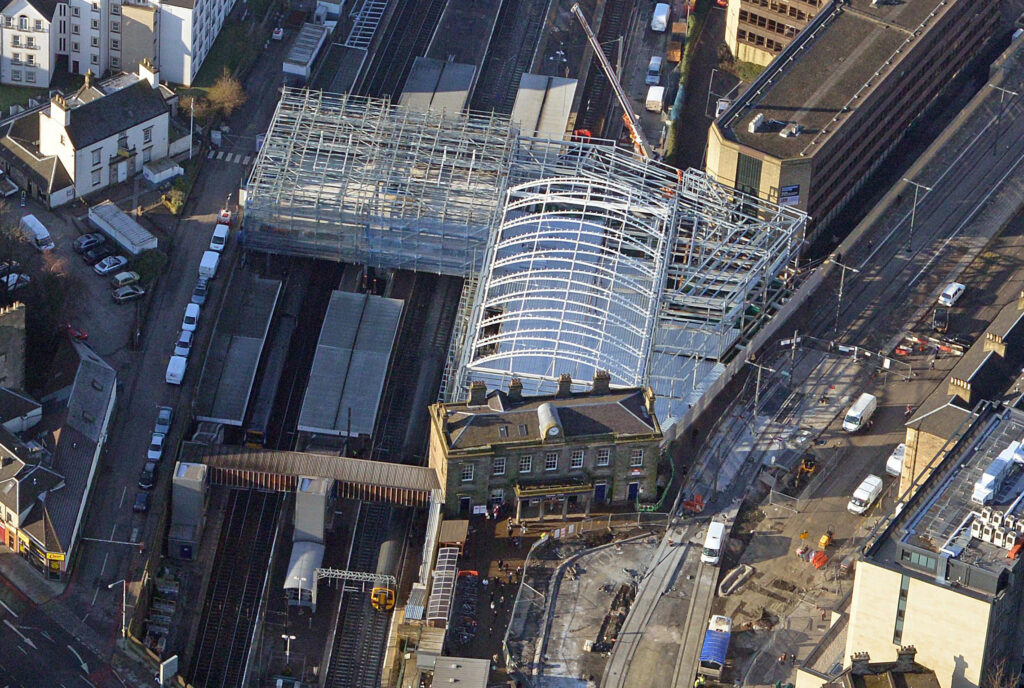
Other stations projects requiring significant track remodelling were Manchester Victoria (July 2014), Liverpool Lime Street (November 2018), Derby (July 2018), and Waterloo (November 2018). Our January 2016 issue explained how and why Rochester got a new station to replace the old one 500 metres to the west. Market Harborough’s platforms were moved a little way to the west as part of a scheme to upgrade lineside to 110mph by realigning 3.8km of track as Peter Stanton described in his June 2019 feature.
Perhaps the most constrained of all the station rebuilds on which we have reported was Glasgow Queen Street which had to be shut for 141 days in 2016 to remodel the station and lay slab track in the tunnel leading to it. We covered this work in our August 2016 and January 2019 issues.
Since our first issue Edinburgh Waverley has been reroofed, and gained a new southern entrance and seven additional or significantly lengthened platforms which we covered in a series of reports (December 2006, July 2011, September 2014, and January 2018). The regeneration of Bristol Temple Meads, including its challenging reroofing and the remodelling of its East Junction was described by Bob Wright in his January 2021 feature.
Transforming four of the top 10 busiest stations presented significant challenges. We reported the opening of a new Kings Cross concourse in April 2012 feature. At Waterloo, the re-opening of the old Eurostar platforms to domestic service allowed platform closures to remodel platforms 1 to 10 as Mark Phillips described in November 2018. The complete transformation of Birmingham New Street, at least above the platforms, was covered in various features the last of which was Marc Johnson’s July 2015 feature, two months before the project’s completion.
It is difficult to think of a bigger challenge than transforming London Bridge over a six-year period which increased the through platforms from six to nine, realigning 15 tracks and platforms, as well as adding 92,000 square feet of sub surface retail concourse whilst the station was being used by 50 million passengers a year. As our July 2018 feature explained, this could only be done with a comprehensive system migration plan which integrated all associated projects.
London Underground
LU’s deep tubes are typically 3.6 metres in diameter which is half that of the recently opened Elizabeth Line tunnels. From 2004 to 2019 the tube’s passenger numbers increased from 950 million to 1.38 billion a year. Accommodating these increased numbers within such constrained infrastructure is a huge challenge for which a number of clever innovative solutions have been developed.
In February 2011, Rail Engineer magazine interviewed LU’s key engineers including Malcolm Dobell, then head of train systems, about long-term plans to provide extra capacity. This included proposals for suitably configured articulated stock with reduced car length to maximise passenger space within the restricted tunnels. This new stock was also to be lighter, more efficient trains which reduces the problem of cooling the deep tube. This discussion also considered how LU will be introducing moving block signalling.
Soon afterwards, LU awarded the contract to upgrade the signalling of its sub-surface railway (SSR) which comprises the Circle, District, Hammersmith & City, and Metropolitan lines. This was awarded to Bombardier which was to provide its CITYFLO 650 ATC which uses Communicatons-Based Train Control (CBTC). However, in May 2014 we reported that Thales had been invited to tender for this contract after TfL and Bombardier ended their contract “by mutual agreement”.
In October 2015, Clive Kessell explained the Thales Seltrac CBTC system and explained how this contract was progressing. In previous features Clive had explained how this system was now operational on the Jubilee line (April 2012) and Northern Line (May 2015). By March 2022, SSR lines were being controlled by the Thales CBTC system, and legacy signals removed, on six of the 14 required SSR areas.
Our ‘Squeezing more from the Tube’ feature in May 2013 considered both new trains and signalling but also emphasised that metro-style operation requires a production line approach with detailed attention to every operational aspect. As an example, the 200-second train turnaround at Brixton on the Victoria line requires one driver to shut down his/her cab before another driver opens up the cab at the other end of the train, to avoid the walk from one end to the other.
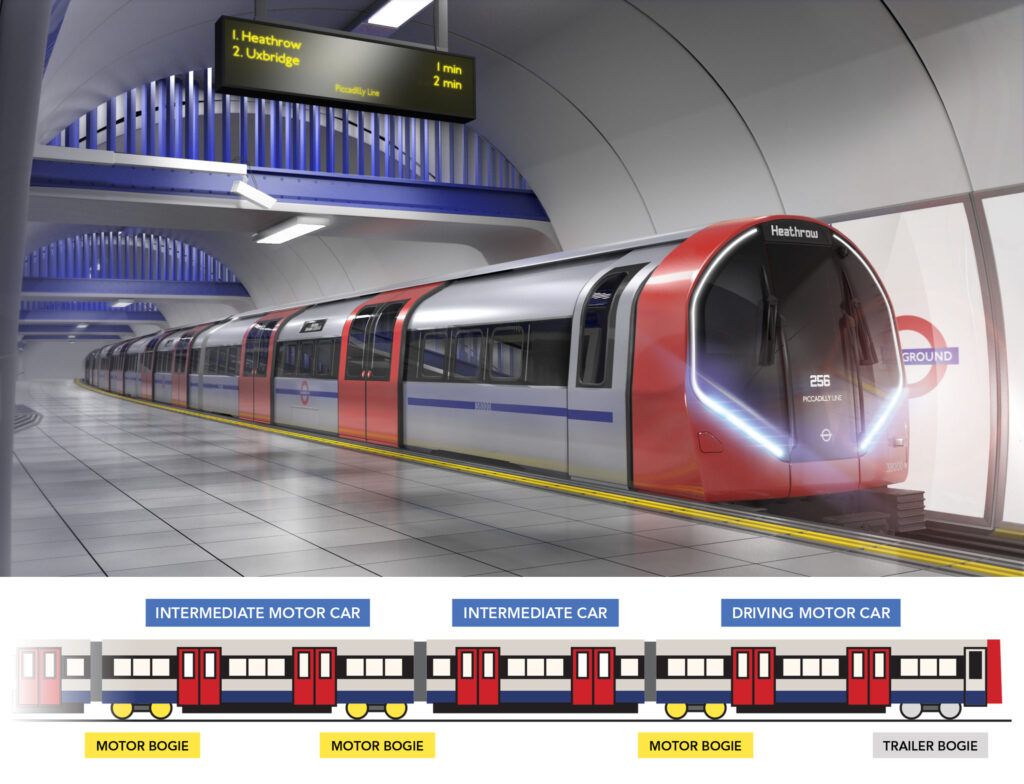
In July 2016, Malcolm Dobell, now one of our writers, provided a detailed explanation of the work being done to keep the 42-years-old Bakerloo line trains in service until at least 2026. The convoluted route from their Stonebridge Park Depot to Acton Works for this life-extension required an overnight journey subject to special rules when travelling over the Jubilee line which has signalling incompatible with Bakerloo line stock.
Malcolm had the opportunity to write about new LU Piccadilly line trains in his July 2018 feature after TfL confirmed its intention to award Siemens Mobility a contract of around £1.5 billion for 94 new generation tube trains. In this feature, he quoted from a TfL report which had identified the benefits of an articulated configuration with shorter carriages and predicted that these new trains would be so configured. His May 2021 feature about these trains showed his prediction to be correct.
In September 2021 we reported on this century’s first tube line opening, the 3km extension of the Northern line extension to Battersea, and how the two tunnel boring machines were set to work in April 2017 and achieved their break though in November 2017.
Light Rail
UK light rail systems comprise of two metros, the Glasgow Subway, and seven tram systems. Blackpool’s tram network dates from the 19th century, whilst other tram systems were built and extended from 1992 onwards. Between 2004 and 2019, UK light rail ridership increased from 143 million to 277 million per year.
Our first issue had a Nottingham tram on its cover. The city opened its first tram line in March 2004 and had recently hosted a PWI seminar ‘Modern Track for Light Rail’. Our March 2013 issue also had a Nottingham tram on its cover and included Chris Parker’s feature on the construction of the system’s phase two lines which included the Karlsruhe Friendship Bridge over the railway station.
The first Manchester Metrolink line opened in 1992 and was the UK’s first modern tram system. Since then, it has been progressively extended. Our August 2009 feature described how the size of the network was to be doubled with new branches to Rochdale, Drylsden, and Chorlton. By the time of our next report in December 2011, extensions to Manchester Airport and Ashton-under-Lyne had also been authorised. A second city crossing was later constructed as described in our August 2017 issue. At 103km, Metrolink is the largest UK tram network with 99 tram stops.
The West Midlands 20km tramline, between Birmingham and Wolverhampton, opened in 1999. In March and May 2013, we described its 1.3km extension into Birmingham City Centre and 25 new CAF-built Urbos trams. Mark Phillips’s update in September 2020 noted that this city centre extension opened in 2016 and described planned extensions to Stourbridge and the HS2’s Curzon Street station.
Sheffield’s tram system was opened between 1994 and 1995. In 2018 its novel tram-train services started to run on 6km of main line to Rotherham. Our August 2013 feature explained how this tram-train concept required a new tyre profile with a deeper flange to reduce derailment risk over Network Rail’s switch blades. In January 2016, we described the Class 399 Supertram units to be used for this service. These are of the same type that will be used on the Welsh core valleys for which street running is planned.
In August 2009, we reported that the first tracks of Edinburgh’s tram system, for which construction started in 2007, had been laid in Princess Street. By the time of our August 2011 report this project was suffering delays, overspend, and a contractual dispute. Yet its depot was almost complete and the CAF-built trams were on schedule. Hence, they were delivered a few years before the truncated system opened. Our June 2014 issue reported the opening of this project and its difficulties.

Such was the popularity of Edinburgh’s trams that, despite their troubled past, in 2015, the city council voted to extend the tram to Newhaven which was part of the original project. Our November 2022 issue described the work on this extension which is to open on time in Spring.
Blackpool’s electric tram system is one of the world’s oldest and was built between 1885 and 1926 so we have no reports of its extension. However, in October 2011, Terry Whitley was able to report on the project to refurbish the tramway and the launch of its Bombardier FLEXITY trams.
UKTram promotes light rail in the UK and has been instrumental in setting up the Light Rail Safety and Standards Board. The work of these bodies and safety improvements such as the FOCUS+ system to reduce driver error was described in our November 2022 feature on the Light Rail Summit.
Glasgow’s Subway, with its diminutive 4ft-gauge trains, is also a UKTram member. Our November 2021 issue described its history and current modernisation programme which will see the first UK trains with Unattended Train Operation (UTO).
The Docklands Light Railway (DLR) was an essential part of the regeneration of London’s Docklands in the late 1980s. Since then, London City Airport, Canary Wharf and other developments required it to be progressively expanded from its original 13km network to one of 40km with longer trains as we reported in various features at the time. Clive Kessell’s November 2022 report describes how DLR has expanded from a “Trainset to a Metro” and explains the challenges of its signalling and control systems.
Although light rail offers great benefits it is expensive – a particularly costly example being £128 million for a 1.2km extension in Birmingham. An alternative, as described in our May and July 2022 issues is Very Light Rail (VLR) systems that have a low-cost track form which significantly reduces the need for utility diversions. It was recently announced that a VLR demonstration route in Coventry has been authorised.
Railway engineering
In addition to specific projects, Rail Engineer has various types of railway engineering features which we hope are helpful for those from another discipline or new to a particular topic. Many of these articles are safety related. Although there have been significant improvements in railway safety, there is still the potential for serious accidents as shown in the Rail Accident Investigation Branch (RAIB) reports.
RAIB was formed in 2005 and since then its forensic analysis has produced reports to determine an accident’s immediate cause, causal and underlying factors. An April 2015 feature showed how RAIB had investigated two quite different accidents which had common themes. These were the broken axle of a Class 222 unit and a track twist fault exacerbated by an unevenly loaded container.
In May 2021, we summarised the 543-page earthworks and 77-page weather reports that Network Rail had commissioned after the fatal Carmont derailment. We also summarised the final RAIB Carmont report in March 2022 which showed there was much to learn about earthworks and incident management.
In 1998 there were 952 broken rails. In 2021/22 there were 66. This reduction is despite a backdrop of heavier axle loads and a significant increase in traffic. Our October 2016 issue explained that this reduction was due to a campaign of re-railing, grinding strategies, ultrasonic inspections, and the tightening up of dip angles. Bob Hazel’s feature on the impact of hot weather on plain line track in November 2022 addressed another safety issue. Developing rail steel that is resistant to wear and the rolling contact fatigue (RCF) that caused the fatal Hatfield derailment in 2000 was the subject of an April 2015 feature.
Handing back newly laid switches and crossings (S&C) at 125 mph is quite an achievement. Grahame Taylor was there when it was done for the first time. His November 2016 report explained that this needed progressive assurance and months of careful planning.
The need for ballastless track and the comparative trials of three such systems was the subject of an April 2014 feature. In July 2020, we explained why HS2 had concluded that its slab track would have a lower whole-life cost than ballasted track and also why HS2 had chosen a pre-cast slab track system.
Level crossings present the greatest risk of a train accident. ORR statistics show that over the past 10 years they have resulted in an average of five potentially high-risk train accidents per year, which is 40% of the total. In our March and May 2022 issues, Paul Darlington explained what is being done to make them safer whilst Clive Kessell considered specific technical and communication innovations.
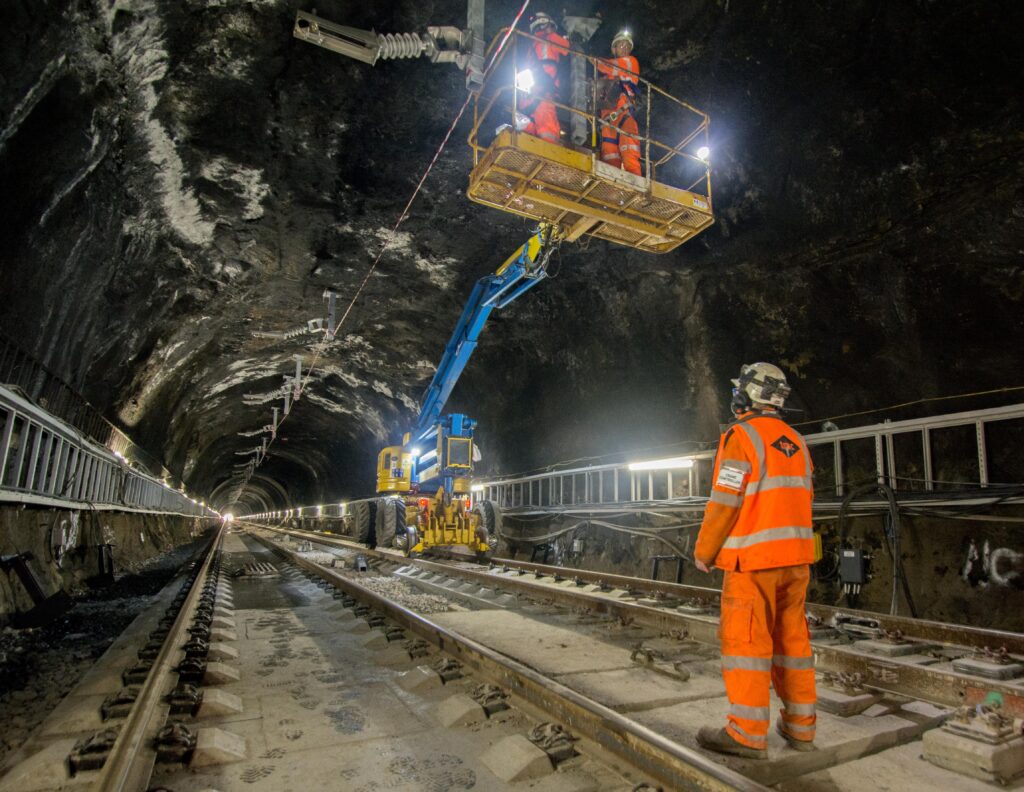
With around 20,000 signalling failures causing delay each year, their prevention is a key performance issue. Our March 2020 feature explained what is being done to reduce these failures by adopting a ‘predict and prevent’ approach rather than ‘find and fix’. Earthing signalling power systems is both a reliability and a safety issue as we explained in July 2019.
The cost of signalling is also a concern for which low-cost modular signalling has been developed. We explain this concept, and how it was installed on the North Wales Coast line, in our June 2018 issue.
For some, signal engineering is considered to be a black art, so we hope that our primer features on this topic such as the ‘Evolution of Signalling Control’ in May 2013 and ‘Train Location Systems’ in March 2020 will help make this less of a mystery. Though often taken for granted, radio is now an essential aspect of railway operations as explained in our July 2015 feature.
With increasing interconnectivity comes a greater risk of cybercrime. Our May 2022 feature explained the role of the British Transport Police’s Cybercrime unit, the nature of such crimes and how the rail industry can protect itself against them.
Clive Kessell’s comprehensive overview of the digital railway in this supplement describes the false hopes and slow progress of digital signalling since our first 2004 edition and how there is now a credible programme for its delivery. Before then, Railtrack bet its future on WCML ERTMS level 3 moving block signalling. This unprecedented tale of corporate self-delusion is told in our September 2018 feature ‘Digital delusion’. Lessons have no doubt been learnt from this, one of which is the importance of listening to railway engineers.
Looking to the future
Our various railway innovation features, such as the reports from RIA’s excellent unlocking innovation seminars and innovation conferences indicate how railway engineering might progress. It is unlikely there will be any obvious dramatic developments. As the railway is a system, any new technology must interface with current assets so this innovation will be evolutionary.
It is likely that the biggest technical changes will come from big data analysis, machine learning, and cloud technologies which will, for example, provide improved remote condition monitoring. These are features of the fourth industrial revolution as described during RIA’s 2019 innovation conference in our May 2019 issue.
The extent to which the railway can support economic growth and decarbonisation depends on political decisions. It is to be hoped that will eventually be a rolling electrification programme, the required capacity enhancements such as the Castlefield corridor and that HS2’s eastern leg to Leeds and its Golbourne link might be reinstated.
Whatever happens, there will be many interesting tales of engineers keeping the railway running and improving it. We look forward to reporting such stories in our next 100 issues.

